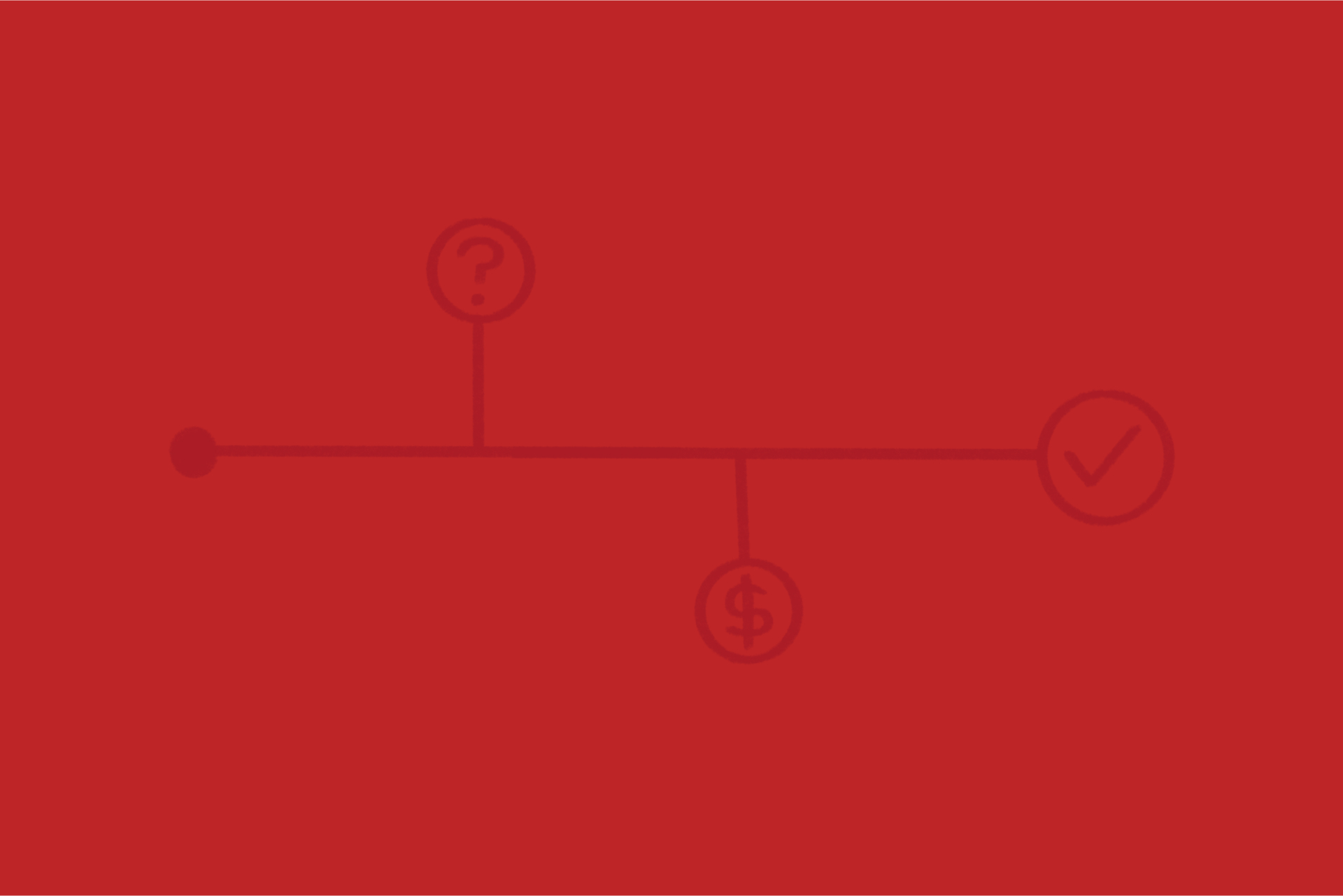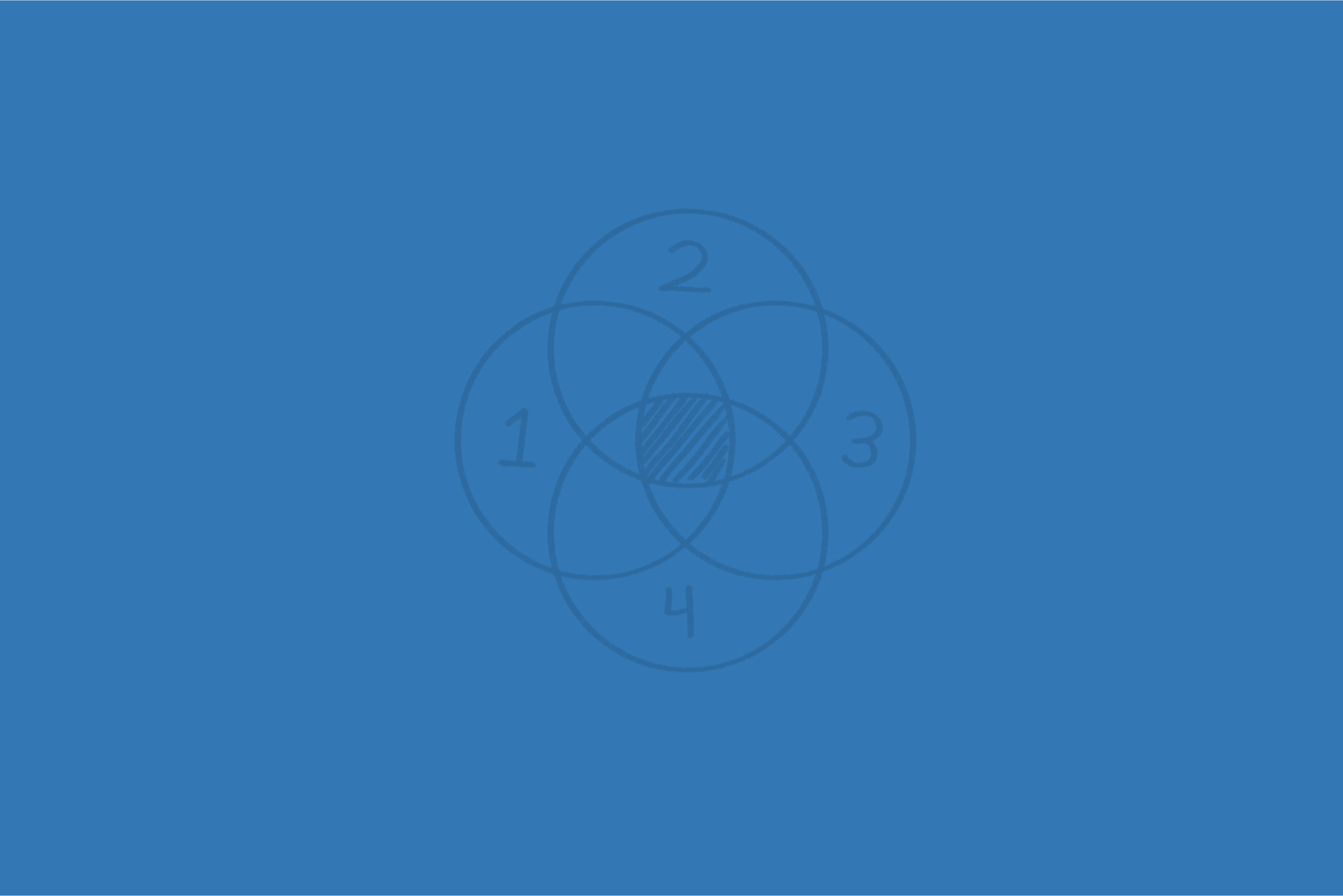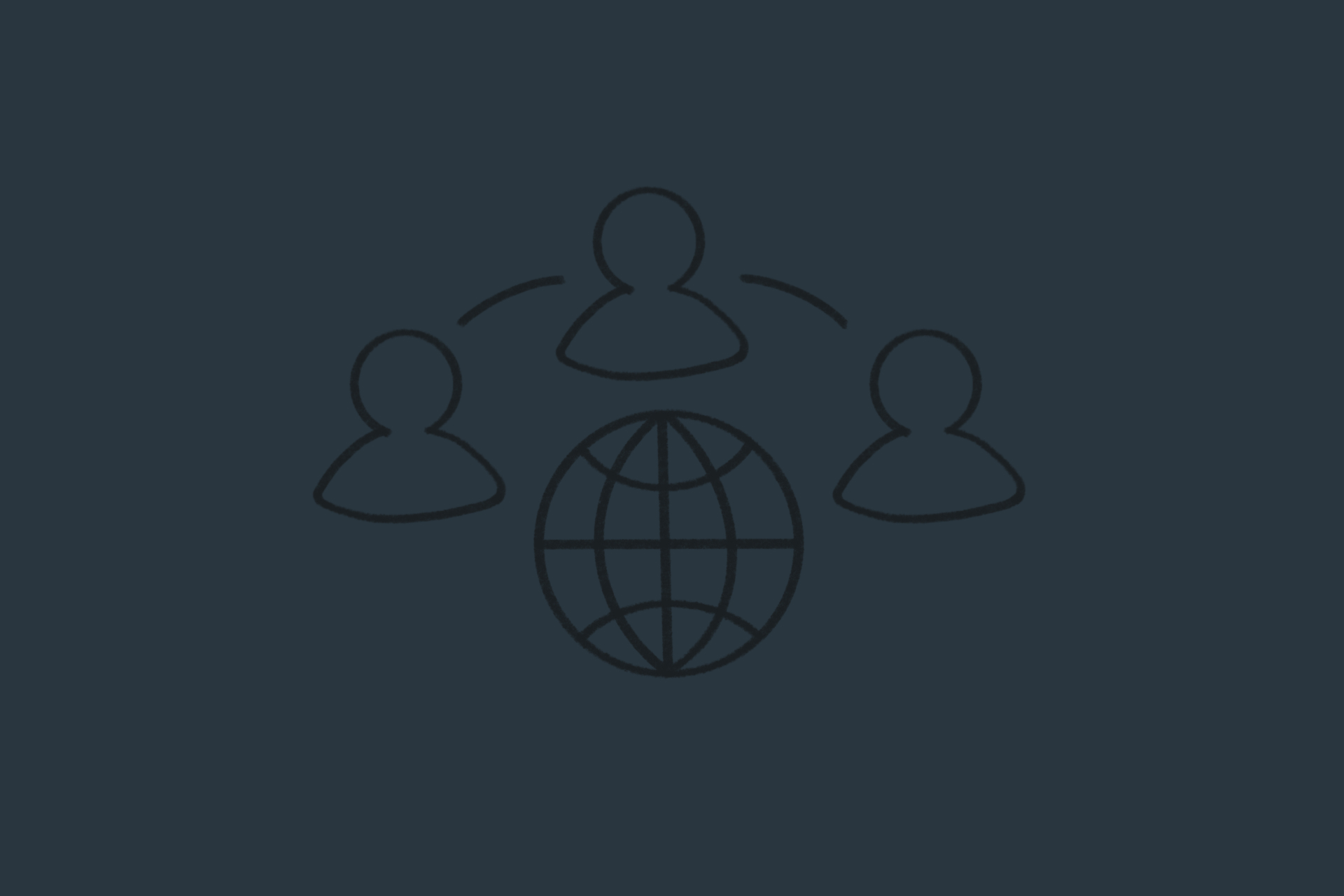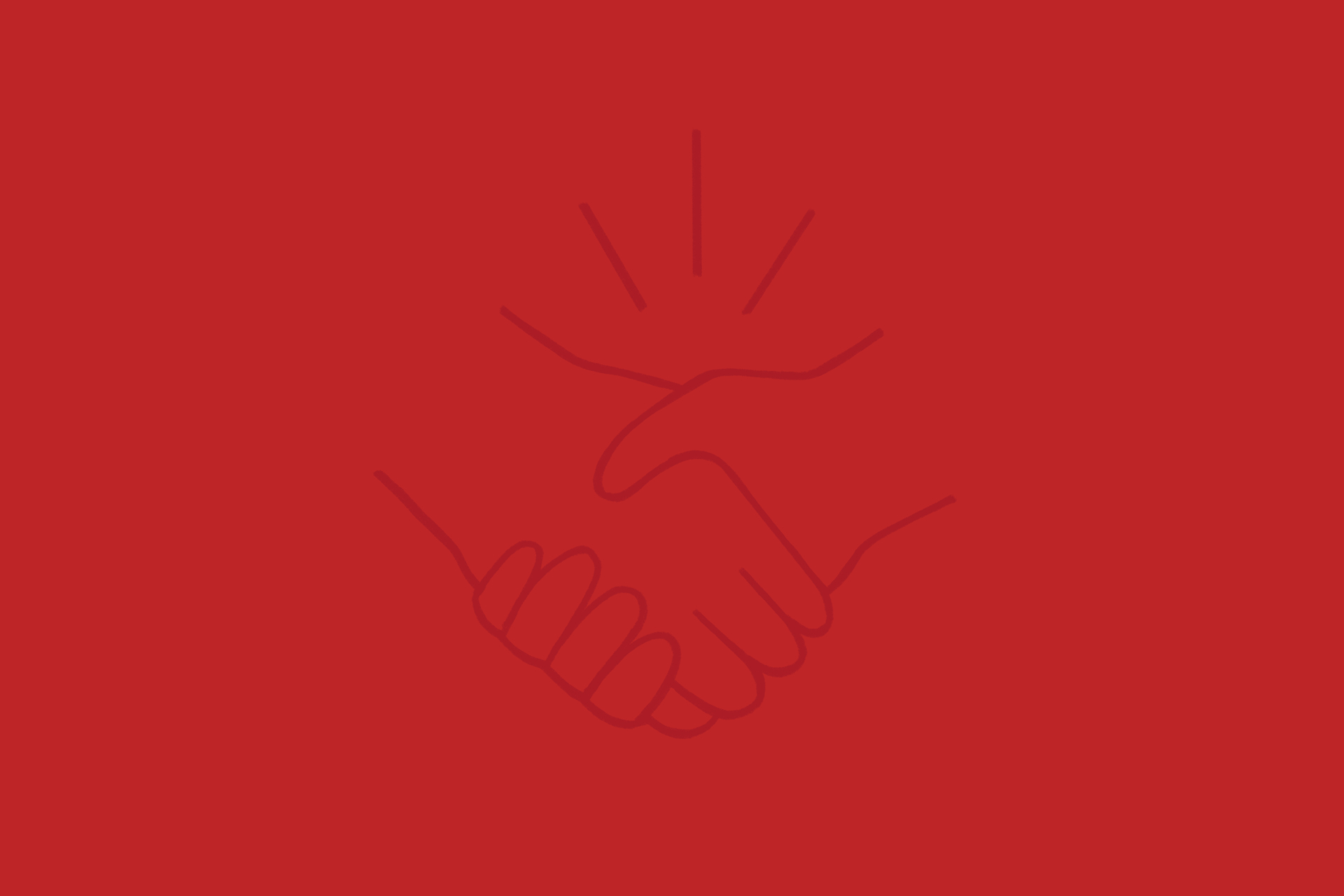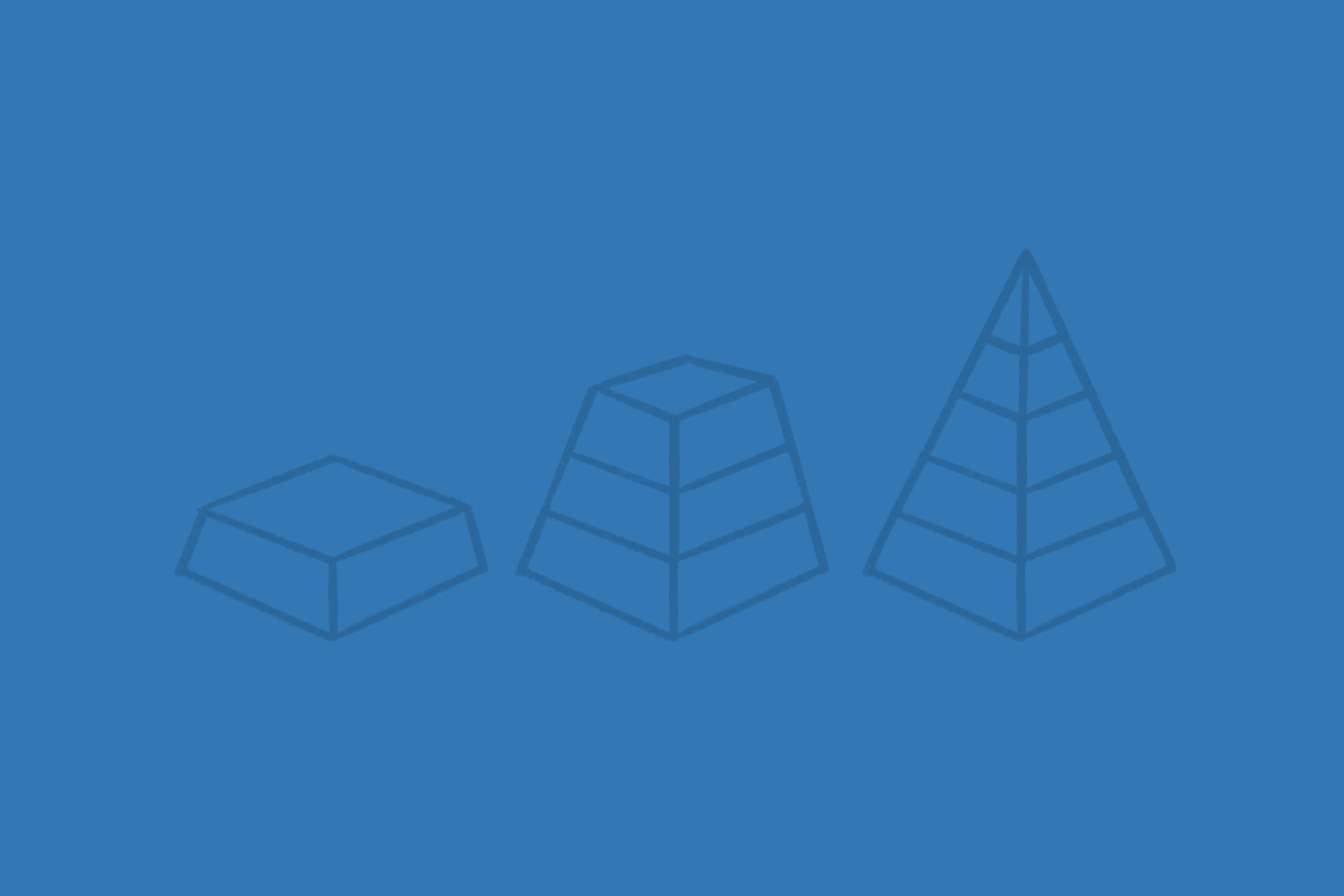Episode Summary
Visual Logic partners, Andy Van Fleet and Kurt Vander Wiel recount the origin story of their working relationship over 20 years ago, and share how design is a method that goes beyond just visuals to uncover the underlying human problems in your business. Andy and Kurt speak to What is Design? And Why is Design Thinking so crucial to solving problems?
Transcript
[00:00:00] Andy: Welcome to humans. First episode two today, joining me is my business partner, Kurt Vanderwell. Hello, Kurt.
[00:00:07] Kurt: Hello, excited to be here.
[00:00:09] Andy: Great to see you and to work through some of today’s topics. And today is what is design. Which is, as we were just talking about is a wide variety of different things. And, , we have some perspectives to share throughout this episode and then also into future episodes as well, but, we’re gonna talk about a couple of stories that you have to share about what design is from your perspective and just for the listeners some background on you. You’ve been doing user experience design and work for the last 34 years. And so you have a lot of stories to share and then you’ll be providing some information to the listeners. And then I can chime in here and there and provide some of my perspective from the past 25 years also doing UX design. But maybe just to kinda start with something that we were talking about earlier is just one of my experiences that I had as an intern 25 years ago actually working for you.
[00:00:59] Kurt: That’s right.
[00:01:00] Andy: Yeah bringing it full circle working at a company called team technologies. I was learning about user experience design. It wasn’t a formal discipline at that point, having just graduated or going to get my degree in graphic design had this opportunity to work on this very first project for olds mobile. And so I took that project on and what I started with was what I learned in school, which is to take the assignment and start doing design work.
And I started with I remember these three different categories of like, oh, this one will be more formal design. This one will be more. Fun. And this one will be I can’t remember if it was functional or whatever it might be, but I spent a lot of time designing these three different concepts and then got into a room, a conference room with the project manager, , who was there to help answer questions and support me as a young designer and I had this hour with this client to present these concepts. And so I walked through these different designs and there was maybe 25 minutes of me just talking. And then I said to the client, I said, so what do you think?
And she was silent for a second. And she goes, I hate all of them.
And my heart sank. And I turned to the project manager at that point and I was gonna mouth the words, what do we do? And he mouthed them before I had a chance to to mouth those words. So now as a 20 year old designer, who’s trying to figure out how do I save this client and how do I save this project and how do I move forward from here?
And, I think in that moment when the pressure’s on that, you’ve gotta deliver. And so what I decided to do was go back to the first one and I just said to the client, I said, look, I know that you don’t like any of these. And I understand that. But if we could go back, and look at the first design, is there something about this design that you like, and she picked out something.
And then I said to the second design, is there something here that you like she did thankfully. And then the third design, the same thing. And in, at the end of the conversation, You know, what had happened was this fourth design emerged in her mind. But I very quickly realized that there’s a big difference between designing for yourself and then taking considerations to design for somebody else.
And luckily it worked out that the client was ultimately happy and the work that we did satisfied, both what she was thinking of, and also satisfied the technicians there that were gonna be using the site. But that was my very first experience in really what is design because there’s a distinct difference between art, which I was used to creating and design, which is what I had matured to.
So, yeah. With that, I’ll turn it over to your thoughts on this, because I know that throughout the years, you’ve got great perspectives on this as well.
[00:03:39] Kurt: Well, that story’s funny. One thing that made me think is where the world was I was running that design organization and here’s my intern presenting to olds mobile.
[00:03:48] Andy: It’s called trust.
[00:03:52] Kurt: or lack of
[00:03:53] Andy: you had a lot going
[00:03:54] Kurt: on. Oh, no, I don’t think so. I don’t know.
The other thing I realized is that since then, 20 years ago since then you’ve had a passion for when people come out of art school that’s a lesson that you teach them without them having to discover it. That there’s a difference between what you did in art school and what you’re gonna do here as a designer and I guess I never remembered that that’s the kind of origin story of that passion of yours to make sure people know the difference between those two words.
Yeah.
[00:04:23] Andy: Yeah. It’s because of that moment. And tapping into user feedback. And the stakeholder feedback is key to shifting the corner from art, which is an expression of yourself, of what you want to do to design, which is using your design tools and your art background in appropriate ways to solve the problem for the end user. And that’s how I categorize the difference between art and design.
[00:04:45] Kurt: Yeah. And I was thinking like my definition of design is ever changing because I think it’s a thing that has multi-facets. There’s this saying that in the Jewish world, that truth is a seven faceted diamond. That every time you turn it, you see something else, but it’s always the truth so it’s like the word design itself can be turned around and there’s all kinds of different angles at which it’s still true to be design. But one thing that I hear in that story that you just told is the designer is in a spot where they’re a bit stuck and they’re in a spot where no one else can see the future where your project manager looked at you in mouthed. What do we do now?
right.
That, that moment of tension,
I think is the moment where designers emerge. People who can be in that moment of tension and not panic and I don’t know, like I’ll just draw another picture or something like that. And okay, what could we do now that could lead us to being out of this moment of being stuck. That’s the moment that visual logic designers get in all the time, because if you’re gonna design for humans, If you’re gonna be brought in, usually we’re being brought in almost always to a problem that some people have been trying to solve for a while.
Yeah. Right.
And they haven’t been able to do it. Right. So you should anticipate that you’re gonna be in a room with people who have tried hard to solve this problem, and haven’t done it. And they’re looking at you now and say, oh, what are you gonna do? Right.
[00:06:16] Andy: And maybe for context, just describe at a high level, the types of projects that we’re talking about, because there’s a big difference between general UX projects and then the types of projects that we’re very fortunate to be able to take on just for context.
[00:06:29] Kurt: Usually the projects that we’re involved in have some something to do. A multi-step process where somebody’s gonna need to get something done, make some decisions. Usually I think those decisions have multiple dimensions and that those dimensions push on each other or have contrasting outcomes. And so the designers gotta balance these things that seem to be at tension with each other.
[00:06:54] Andy: In some pretty significant domains
[00:06:55] Kurt: yeah. Military and finances and agriculture things that are hard and a lot of times things that are highly regulated too. So that adds another part of the tension.
[00:07:05] Andy: Yep. Yep Okay. Thank you for the background.
[00:07:07] Kurt: Yeah. So speaking of, I was at a client recently that had a digital experience for over 20 years. So for 20 years, their clients have been able to go online and complete the transaction. That’s the main transaction that this company provides. And after that much time they had small single digit amount of usage of that digital system as compared to people who called the company and talked to a salesperson and did a transaction with a human. And in that amount of time that it hadn’t just been stagnant. They didn’t just put something out 20 years ago and leave it. They continued to try to redesign it right. To try to rethink it. So they had poured tens of millions of dollars into continually trying to rethink this problem. And still after all that time, have this almost no uptake. And they’re in an industry where when you poll the users about a third of them, say, I want a digital experience, a third of users who have access to a digital experience, say I want a digital experience. Right and a very small percent of them actually use it. And so this company had also tried other things like joining a consortium, like maybe we can’t do it on our own. We have to join a consortium. They’ve tried like white label. Like maybe we can’t do it on our own. We need to purchase some other thing and make it ours. And still after all this time and all that effort almost no uptake on their digital experience. So we’re hired and that’s like our intro. And so now you get that moment really, my eyes are big and I’m like, what in the world? What could you do? And so I just like people to pause and think about okay, you’re the designer or you’re the senior leader. How could you approach a problem like that? What would you do next? And unfortunately what happens over and over, and it just makes no sense is that people convince themselves that another visual redesign is actually gonna solve something and we that’s not gonna solve anything. Right and so we could have actually, as visual logic said, Hey, we’re gonna propose this very modern looking new da dah, dah, dah. But we knew that wasn’t the problem.
[00:09:18] Andy: How did you know that? I mean, obviously
[00:09:19] Kurt: Yeah, because of their efforts, right? Because their site that they had didn’t look bad. It wasn’t super gorgeous, but it didn’t look bad. It’s not bad enough that it was the thing that was keeping people away, you know, You open it up and it hurts your eyes. It’s nothing like that. And it wasn’t hard to use. We could see that the actual process wasn’t hard. So it wasn’t that it was hard to use. It wasn’t that people weren’t finding it. They actually had a huge amount of traffic on their site, just not people doing the transaction. So they had a lot of traffic, so people knew that they existed. So none of the excuses that you would maybe have, would hold up. And so really we were left with, there is some fundamental problem happening here that nobody has really found yet, or nobody has seen. So, what is it? right. And so that tension, that pause right there. I think one of my definitions of design is that we’re in places we’re in challenges where people have tried, but can’t figure out what the problem is. And that the problem in those cases, the problem is always a human problem. And I think in those cases, the underlying problem is that they haven’t found the underlying problem. Right. That’s the core problem is they don’t know the problem. And so the actions they’re taking never solve it because they’ve never really figured out what the problem is. So in the case, above the case that we’re talking about, the problem isn’t the task, the problem, isn’t what you’re asking people to do. And yet every time they did a redesign, they just rethought the task. The problem is this human problem, which is I’m nervous to do the thing that you’re asking me to do, because what they’re asking you to do is a giant financial transaction.
[00:11:05] Andy: Right
[00:11:05] Kurt: A really giant financial transaction. That’s gonna affect your whole next year’s worth of income. And they’re asking you to take this gamble using a digital experience where you’re gonna push a button , and. The anxiety that goes along with that, like all of us can relate to even just with our own selves, like our investment dollars. Like we’re in a period right now of inflation. We’re in a period right now where there might be recession. We’re in a period right now where we don’t know. So every time you go to push a button on making a new investment, you know what that feels like the anxiety that goes with that. And now imagine I’m asking you to invest your whole next year’s salary into one financial transaction and you have a button to push. right? It doesn’t matter if that button has square corners or round corners. doesn’t matter if the cancel buttons on the left or the right all these like questions that people love to get themselves wound around. None of those matter one bit about whether you’re gonna push this button or not. What does matter is how do we make you feel comfortable that you should push that button? So we did a lot of talking to people and listening to people. Talk about how they actually go and make this decision when they’re on the phone, when they call. Cuz remember calling was successful. Most of their sales were from calls, right? So what happens during a call? Well, what happens during a call is that if a person’s about to make this huge financial transaction, they need someone to tell ‘em you’re gonna be okay. Yeah. They need someone to say, yeah, I understand this is a risk. It is a risk, but the fundamentals are sound. We’ve been here before. You’ve done this before. This is how it’s worked before. Yes things might improve a little and you might miss out on a little bit, but in the big picture, it’s still worth your time to do this right now. So the person on the phone’s doing all that. That’s what the digital experience needs to do. It needs to help me with my anxiety. it needs to help me with my fear of missing out on the thing that might go better. It needs to help me understand the fundamentals. Whether we’re in a good spot or a bad spot, it needs to help me interpret the news. I just saw this happen in the news. What does that mean for what the prices are gonna be coming up? Right. It needs to be all that underlying support and then the pushing of the button’s trivial, right. It hardly is anything.
[00:13:19] Andy: The end users needed a lot of reassurance in order to make this decision
[00:13:22] Kurt: Yeah what we ended up thinking is they needed analysis, education, reassurance, facts, and they needed all that stuff really mixed together. We couldn’t separate those into different parts of the site. Like there’s an analysis part of the site. They needed all that stuff really mixed together, cuz that’s how the phone calls worked
[00:13:41] Andy: So you’re designing, you know, this is the design process of discovery and understanding. And then starting to design this unique, I’m guessing where you’re headed with this to design this unique experience that starts to check all of those boxes that you did through discovery. I think before we get into that a little bit, Was the scope of the project, did it identify these, aspects that you just talked about? Like observing the phone calls and observing the end users, not making the transactions? I’m just maybe just spend a brief moment on that before we jump into like the design outcomes
[00:14:17] Kurt: Yeah that is such a great question. Like knowing ahead of time, what it’s gonna take, what the process is gonna be, what tools we’re gonna pull out of our toolbox to do, seems to me always so impossible because we don’t know the problem we’re trying to solve ahead of time. And so the answer is no, absolutely no. We had no idea that we were gonna need to listen to phone calls because we didn’t have a hypothesis about what the problem was. In fact, in our first meetings, we didn’t realize how severe the problem was. We really thought this was gonna be more about these transactions are complicated and they involve a lot of math. They involve a lot of moving parts where you know, this part of the transaction affects this other part of the transaction. And there is that these are complicated transactions. But we had no idea that the actual problem isn’t about the complication, the actual problem is about the human sitting in a chair in their office, sweating. We always talked about that mailChimp gorilla hand with the sweat dripping off it. Right. Because that’s exactly what this customer was like.
[00:15:16] Andy: With a whole year’s worth of income on
[00:15:18] Kurt: Yes, yes, yes, yes, yes, yes. So the answer is no, that we did not know the process. We were gonna have to go through. Because yet we had not yet hypothesized what the problem was. And so the method you’re gonna use is a method that’s gonna try to answer the hypothesis that you come up with. And then either say, yeah, our hypothesis is right or wrong. So we came up with a hypothesis that this is what it was. And then, well, how do we test that? Well, we test that by listening to phone calls and seeing what’s happening with the humans. When they’re talking to a salesperson And we actually created a scoring system that we would be able to listen to a conversation. And if a person said, Hey, how was Johnny your son? Did he have a baseball game yesterday? We would score that as a trust building comment.
Interesting.
Yeah. And then if the person said wow, did you notice finally, brazil got some rain it’s like they’ve been in a drought for so long. We would say that’s an analysis statement that was just being made. so we had what kind of a statement it was and then what topic it was about. And we would match those two together. So we would be able to kind of quick, we created a shorthand. We could say that’s an, A3 kind of comment.
[00:16:24] Andy: yeah,
[00:16:24] Kurt: It was trust building and it was about family.
[00:16:26] Andy: So how does this, then these activities feed into the design output.
[00:16:33] Kurt: Well, that’s great question, because what you imagine going in the design outputs are going to be are going to be a new design visual of a website. But what really happened was there was a new concept of what the website needed to be like. The website needs to be like a conversation. The website needs to be like inner weaving these different kinds of both topics. And statement types inter weaving them with each other instead of trying to isolate them because the human phone conversation didn’t isolate them. So it became much more, really interesting to me and much more effective to say our final solution needs to be like this. Okay. Now visual designers can get involved and say, okay, , what would that look like on a screen? How would we do that? And so then we started actually moving pixels onto pages, right? So that part comes later. But, and then always, always, always. There’s always a temptation to like water that back down, cuz it’s the easiest thing to do water that back down. So we can continue to have this metric that we could hold and say, remember what we’re trying, we need to do. We have to build trust. We have to produce analysis. We have to give education. We have to build confidence. And does this page that you just designed visually do that stuff? I’m not seeing a lot of those things on this page, so we should try again .
[00:18:01] Andy: So that’s, I mean, obviously this is a dramatic shift from what they had originally and then through the discovery process, the outputs were dramatically different than what, I mean, our team even went to create say, maybe. Just highlight some of the outputs or some of the the outcomes that were successful as a result of this design thinking and changing this mindset of this is what we’re gonna start with. And then this is what we actually ended up with.
[00:18:27] Kurt: You know, the real interesting thing, I think when you look back, if you would go to those screens today and look at them, you wouldn’t know what’s there. Like you wouldn’t be able to tell me you wouldn’t be able to dissect it and tell me, oh, I see what they’re doing. They’re giving me analysis mixed with education mixed with encouragement. You wouldn’t know that. So what you would see you would think, well, that looks like a website. all right. Or that looks, it was a mobile app that looks like a mobile app. But, when I look at it, I can see all those things going on and I can see that one thing that had to happen is we actually needed to help them build technology that was able to do these things. We had to help them build technologies that would be able to create a sentence on the screen that analyzed the rain in Brazil and what that meant for prices today, right? Because that you can’t, that’s not static text, that’s not in some sort of content manager somewhere. So we had to say if you really wanna be serious about this, this is not content management driven. This is some sort of live something that’s creating these things, or at least it’s within the last 24 hours for, so it to be relevant. So then they actually separated that off as a whole different new project where they created this system that could create these sentences that could then get plugged into the right spots on the website. And so that you, as a customer, when you see it, It feels natural. although when we did user tests to see the effect of this. And our users actually did notice. I said, you wouldn’t notice, but you can tell that the website there’s something different about it. And people would be like, man, I really like that it just told me that I was gonna be okay
[00:20:03] Andy: yeah.
[00:20:03] Kurt: In effect.
[00:20:04] Andy: I think maybe just to bring it full circle and just to give you an opportunity to summarize your thoughts on design and I think for those that are listening, that this will resonate.
Design is oftentimes seen as you described as pixels on a screen and what you just walked through was designing, understanding and designing this process that then matured its way to actual screen assets and some artifacts, but maybe just some thoughts as we wrap up on this, episode of what is designed from your experiences.
[00:20:35] Kurt: So I was going to say, just simply design is the discovery and the solving of the, problem, the root core problem. So, one aspect of design is people who are able to see that there is a new problem discovering that the problem isn’t what you think the problem is. All too often, the people we see out in the field who are doing user experience, aren’t doing that. They’re not actually asking what the root problem is and they’re taking the spec that they were given and they’re designing screens around it. But design is actually a person who can find what is the actual problem underneath here? And then a person who can. Solve that problem, because that once you found the problem, they’re usually very hard problems, right? It’s like how are you gonna actually build trust in a person? That’s not a trivial thing to ask yourself. So discovering and then solving that’s the role of design. And I’m gonna add to it what we said earlier the, person who can be trapped in a corner and, realize there’s something fundamentally hard and wrong and that nobody else in the room is seeing it or other people have tried and failed. and to be able to rise above that or to be able to keep moving forward through that is a trait that we look for in a designer whether that’s called design. But I think that’s part of the design process is the be to be able to push yourself through when it feels like I’ve just hit the end of the road.
[00:21:55] Andy: Absolutely. You said it very well. And I think that resonates with two of our upcoming episodes as well. One is hiring UX talent and looking for that. And the other one is demystifying the UX timeline, because I think that’s another great one to discover. And I think we’re gonna need quite a bit of time to extrapolate on that. as you’ve described, the UX timeline is I think a lot different than the way that people might think from a design standpoint. So, kurt always great to visit with you and thanks for the story and for helping to demystify what is design.
[00:22:23] Kurt: It’s fun. Thanks.
